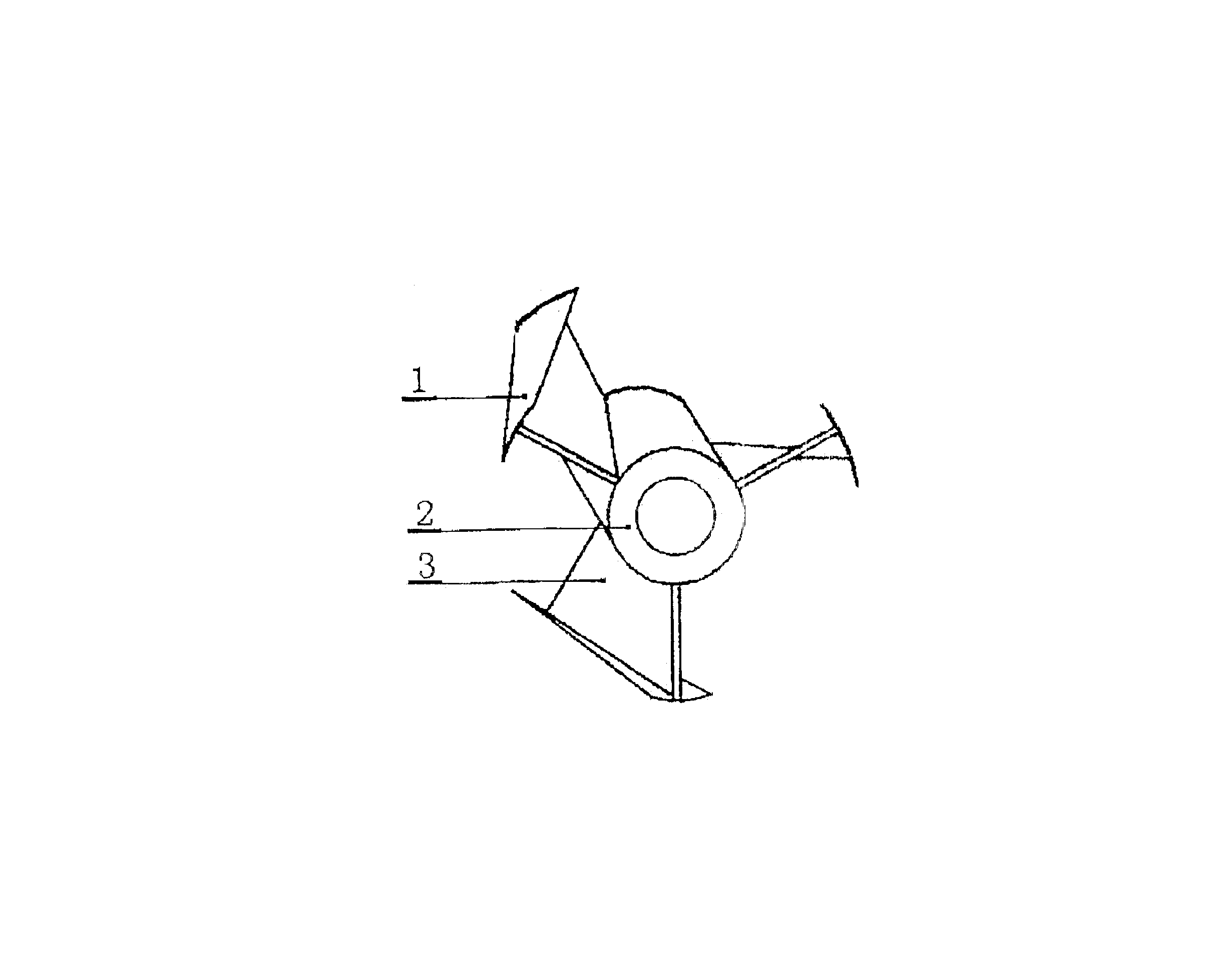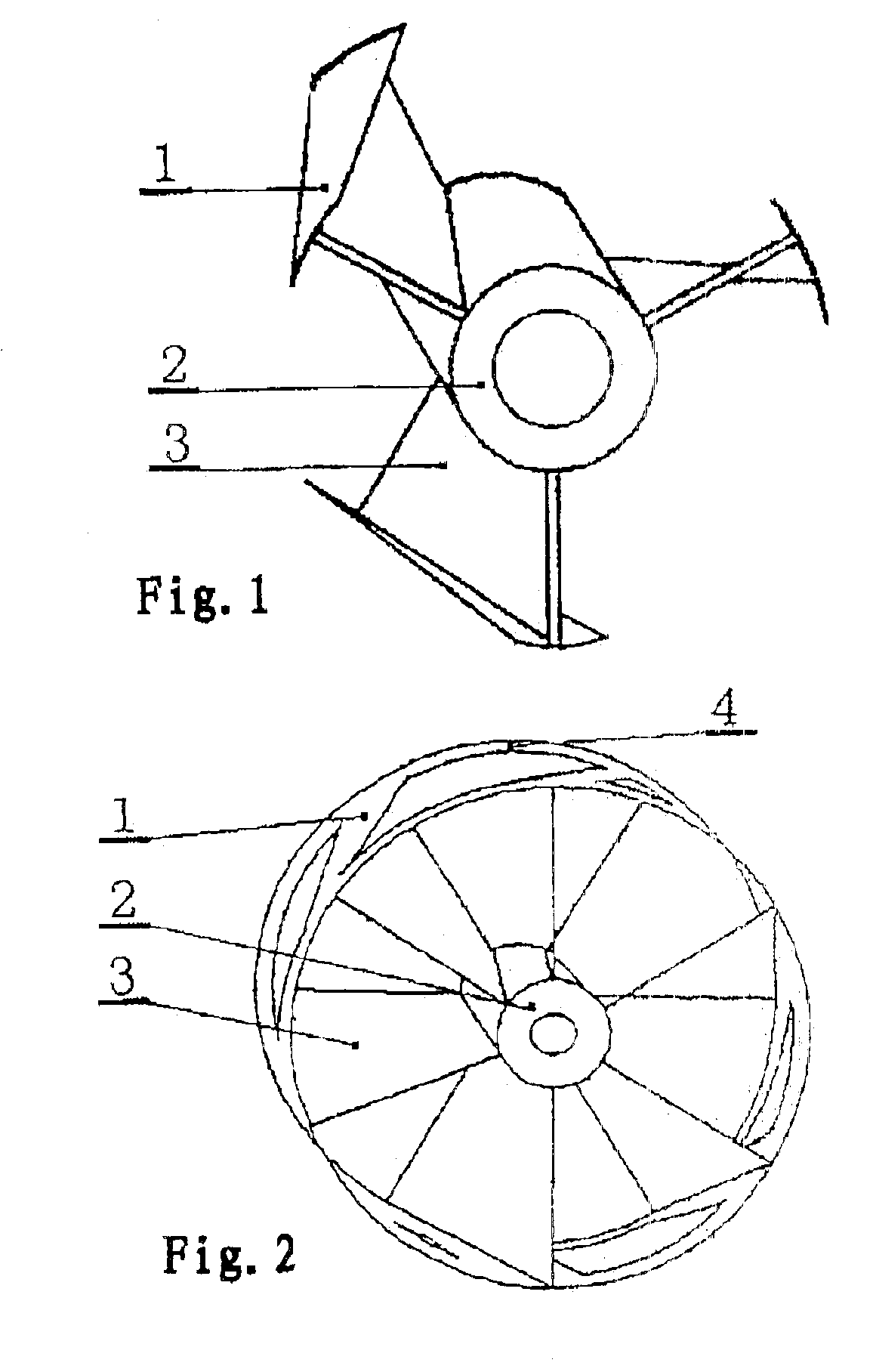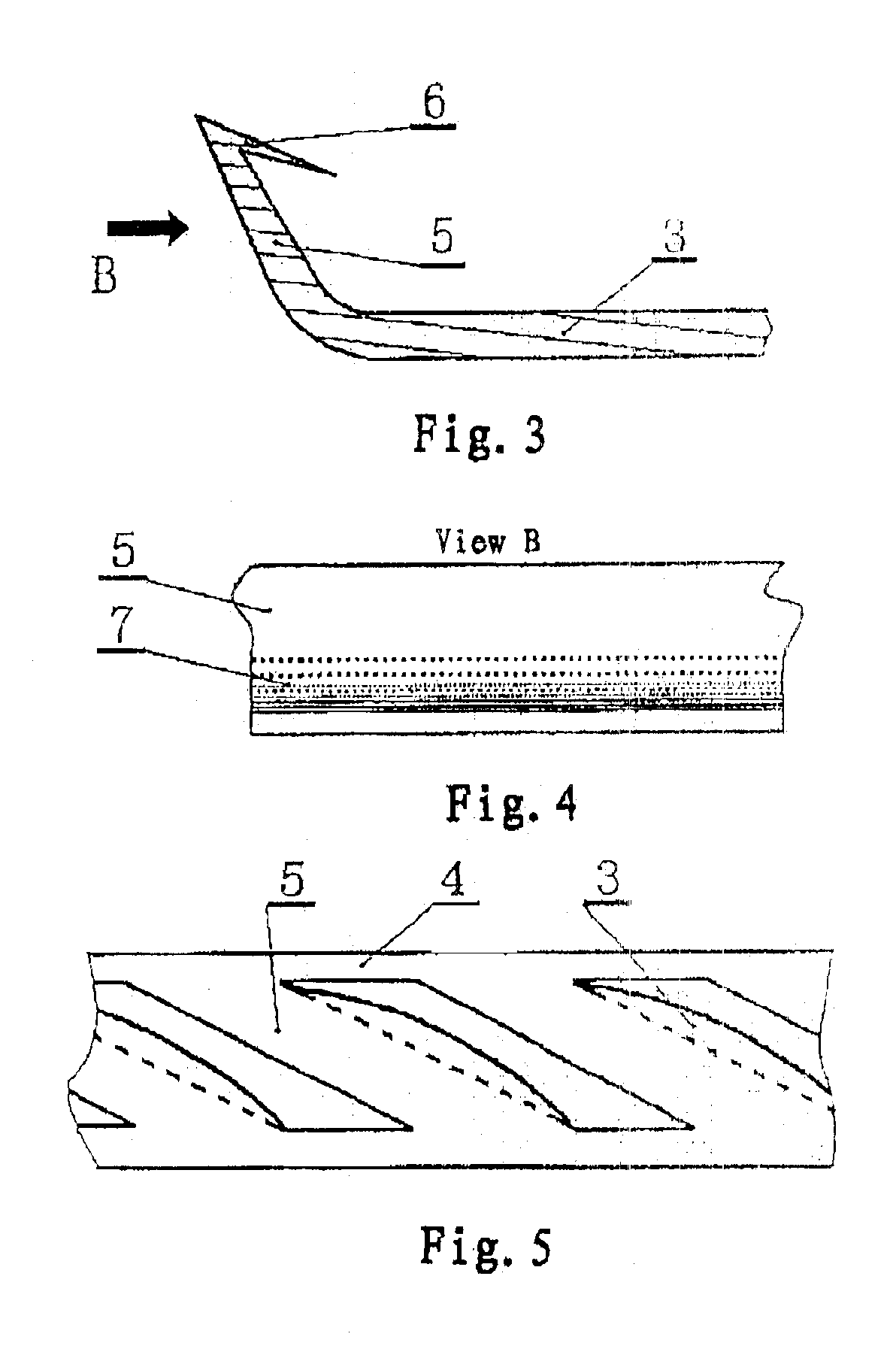High-performance propeller
a propeller and high-performance technology, applied in the field of propellers, can solve the problems of serious loss of energy at the tip of the blade, and achieve the effects of reducing energy loss, increasing acting force, and small induced drag
- Summary
- Abstract
- Description
- Claims
- Application Information
AI Technical Summary
Benefits of technology
Problems solved by technology
Method used
Image
Examples
embodiment 1
High-performance propeller in the type of propelling used in air
Referring to FIGS. 1 and 2, the propeller for this embodiment has a hub 2 and twelve blades 3, characterized in that a double-side arc brim 1 is affixed at the tip of blade 3. A strengthening ring 4 is disposed among the blades. The propeller may be made of any suitable material such as plastic, metal by moulding, welding and other mechanical ways.
For the propeller of this embodiment, the diameter of the propeller is 0.8 m, the effective angle of attack is 14 deg., the lift coefficient L is taken as 1, the aspect ratio is 4, the area of blade is equal to rotational area of propeller, the height of brim is equal to 26% chord length of blade and the brim has a 22 deg. outward inclination. The strengthening ring 4, is located at the tip of the blades and beyond the axial width of blades. The strengthening ring and brim are connected by connecting strips which plane is substantially parallel to the rotational plane of prope...
embodiment 2
High-performance propeller in the type of propelling with blades having excessively wide chord
The propeller for this embodiment has a hub 2 and six blades 3, characterized in that a double-side arc brim 1 is affixed at the tip of each blade 3. For the propeller of this embodiment, the diameter is 0.8 m, the axial length is 0.92m, the angle of attack on the inflow side of blade is 60 deg, the angle of attack on the outflow side of blade is 30 deg. and the aspect ratio is 0.4. The propeller is configured in a helical form in its entirety. The height of brim on the negative-pressure face of blade is 0.03 m. The height of brim on the positive-pressure face of blade is 0.03 m for the inflow side and is 0.08 m for the outflow side. The brim has no any outward inclination. The anti-overflow edge is 0.06 m wide and at a 60 deg. angle to the brim.
Now the propeller of the invention will be compared with that in the turbo-fan engine or compressor having same sucking port area and under same op...
embodiment 3
High-performance propeller for the conventional fan
This embodiment is compared with the conventional fan with 400 mm diameter. The construction, shape, size and angle of attack for the propeller of the invention is same as those of the conventional fan except that the blade is provided with single-side arc brim 5, as shown is FIGS. 3, 4 and 5.
The propeller for this embodiment has a hub 2 and four blades 3, characterized in that a single-side arc brim 5 is affixed at the tip of each blade 3. The width of brim is 40 mm, brim has 15 deg. outward inclination, and the equivalent diameter of fan is 420 mm. The juncture and its nearby region between the brim and the tip of negative-pressure face of blade is in the shape of non-streamline arc on which there is a 6 mm wide vortex-generated zone 7 as shown in FIG. 3 and FIG. 4.
The equivalent diameter of fan of this embodiment is 420 mm. Under the condition of same rotational velocity, the drag is equivalent to that of the 400 mm conventional ...
PUM
 Login to View More
Login to View More Abstract
Description
Claims
Application Information
 Login to View More
Login to View More - R&D
- Intellectual Property
- Life Sciences
- Materials
- Tech Scout
- Unparalleled Data Quality
- Higher Quality Content
- 60% Fewer Hallucinations
Browse by: Latest US Patents, China's latest patents, Technical Efficacy Thesaurus, Application Domain, Technology Topic, Popular Technical Reports.
© 2025 PatSnap. All rights reserved.Legal|Privacy policy|Modern Slavery Act Transparency Statement|Sitemap|About US| Contact US: help@patsnap.com



